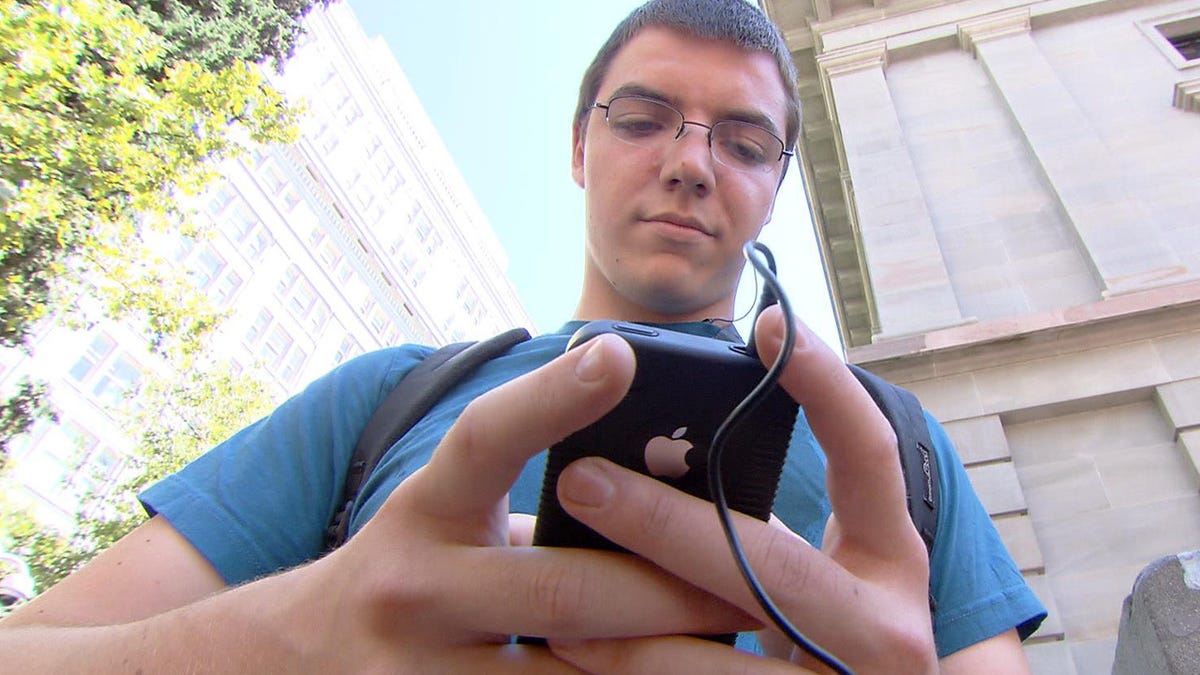How to avoid 'text neck'
Using your phone can be a pain in the neck. Here's how to relieve some of the pressure.

What is your head doing right now? If you're reading this using your phone, laptop or tablet, chances are you're hunched over with your head tilted down. Research has found that this posture, called "text neck" can lead to bad posture and cause pain in your neck, shoulders and spine.
What's text neck and why is it so bad?
The average human head is around 10 pounds (4.5 kilograms). Imagine putting a 10-pound bowling ball on a stick and then slowly leaning it forward. The stick could probably handle the pressure of holding the bowling ball while it was upright, but as you lean it forward, the stick would start to bend and then eventually it would crack.
This is because when you lean a heavy mass that is supported by a narrow column, the force on the column becomes greater the farther the mass is tilted.
One study published by the journal Surgical Technology International aimed to determine just how much force the head puts on the spine as the head tilts. If the head is tilted just 15 degrees forward, that puts 27 pounds (12 kg) of forces on the cervical spine and the supporting muscles. The farther the head tilts forward, the more pressure it puts on the spine:
- 30 degrees puts 40 pounds (12 kg) of pressure on the spine
- 45 degrees places 49 pounds (22 kg)
- 60 degrees places 60 pounds (27 kg)
All of that pressure can lead to pain and pulled muscles. I bet you're feeling a stiffness in your shoulders and the base of your neck right now. That's text neck.
Fight text neck with your device
No matter what, we're going to use our devices, so finding ways to combat text neck without giving up screen time is ideal. Ironically, one of the easiest ways to combat neck pain is by using your device.
There are several apps on the market that detect the angle of your head and alert you to adjust your posture. For example, Text Neck Indicator LITE posts a picture of a head in your notification bar to alert you when you're head is starting to tilt forward. A red head notification mean you need to straighten up and a green head notification means you've got good posture.
The apps work by detecting how tilted your phone is at any given moment, since the tilt of your phone often mimics the tilt of your head. While not a perfect solution, I've found that the notifications are a good reminder to straighten up when I'm using my device.
Work it out
Exercise and stretching can play a big part in preventing and relieving text neck. The HeadUp app, like Text Neck Indicator, has posture notifications, but it also walks you through exercises you can do to combat neck pain and to strengthen neck muscles.
Don't want to download an another app? Add some core strengthening exercises to your workout and stretch your neck at various angles while using your device. Dr. Armin Tehrany, clinical assistant professor of orthopedic surgery at Mount Sinai School of Medicine, suggests setting your phone timer to go off every hour to serve as a helpful reminder to stretch. You can also set up reminders with Google Calendar Goals.
Here is a good stretch to combat text neck:
- Sit up straight or stand.
- Tilt your head toward your right shoulder and hold for 15 to 30 seconds.
- Tilt your head so that your chin touches your chest for 15 to 30 seconds.
- Tilt your head toward you left shoulder and hold for 15 to 30 seconds.
- Tilt your head back as far as you can and hold for 15 to 30 seconds.
- Repeat 2 to 4 times in each direction.
Talk, don't type
Another way you can lessen the strain on your neck is by reducing the need to look at your screen as often by using voice commands and talk-to-text as much as possible.
"The best way to avoid it is to text with voice recognition, with the device held so that the person is facing forward, and not down," said Dr. Derek Ochiai, board certified hip arthroscopic surgeon and sports medicine doctor at Nirschl Orthopaedic Center in Arlington, Virginia. "If that is not possible, try a device with a bigger screen, so the device can be held farther away, so that the neck is facing forward."
When to see a doctor
Sometimes exercise and good posture aren't enough, or your neck pain may be a sign of a some other condition. "If your neck pain does not improve after a week, or the pain radiates down the arm with associated numbness, tingling, burning or weakness, you should consult a physician for an evaluation," said Tehrany.

